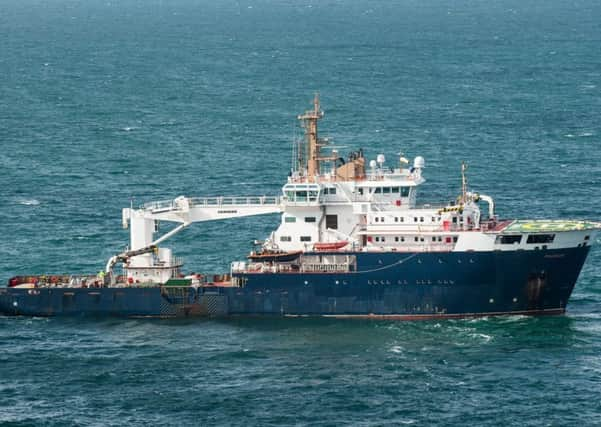Scots lighthouse ship Pharos is saviour of submariners too


But the Pharos has a lesser-known additional role – rescue training in case a submarine becomes stricken beneath the waves.
Once a year, the 280ft-long Northern Lighthouse Board (NLB) vessel teams up with the Royal Navy and others bodies such as the Royal Norwegian Navy for exercises to simulate a submarine disaster.
Advertisement
Hide AdAdvertisement
Hide AdThe Faslane-based Nato Submarine Rescue System (NSRS) has never been used in an incident, but its predecessor rescued seven Russians in 2005 after they became trapped in a mini-submarine which was entangled in cables off the Kamchatka peninsula in eastern Russia.
It is on constant standby to be flown to the aid of a submarine in distress anywhere in the world.
The NSRS comprises an unmanned remotely operated vehicle (ROV) to clear obstructions and deliver supplies, and a manned submarine rescue vessel which can dive to 2,000ft to evacuate trapped sailors.
Pharos is seen as the ideal training partner for the ROV because of its high manoeuvrability thanks to having the equivalent of outboard motors as well as its main propellers.
This “dynamic positioning” propulsion system enables it to maintain a precise location at the rescue site for the umbilical cord connected to the ROV.
Pharos also has a large deck with space for a helicopter and a crane.
The exercises are normally held off the west coast of Scotland, but have also taken place in Norway, which jointly owns the NSRS with France and the UK.
NLB chief executive Mike Bullock said: “We take great pride in supporting this vital emergency service for UK and allied submariners. It demonstrates the versatility and capability of our vessel Pharos and her crew and is a good example of cross-government collaboration.
Advertisement
Hide AdAdvertisement
Hide Ad“Working together with the Ministry of Defence [MoD] means we can collectively make the best use of our resources. It also brings tremendous benefits to the ship’s crew.
“While their work is always challenging, this brings additional variety and allows them to share expertise, knowledge and skills with their MoD colleagues.”
A Royal Navy spokesman said: “The system has never been used for real-world incidents but is used regularly for Nato exercises.
“It can be deployed anywhere in the world, diving down to a submarine in distress, ‘mating’ with escape hatches and carrying out an evacuation of the vessel.
“The NSRS is designed to be transported anywhere within just 72 hours – which the team have achieved during training with 23 submarines in 11 countries.”